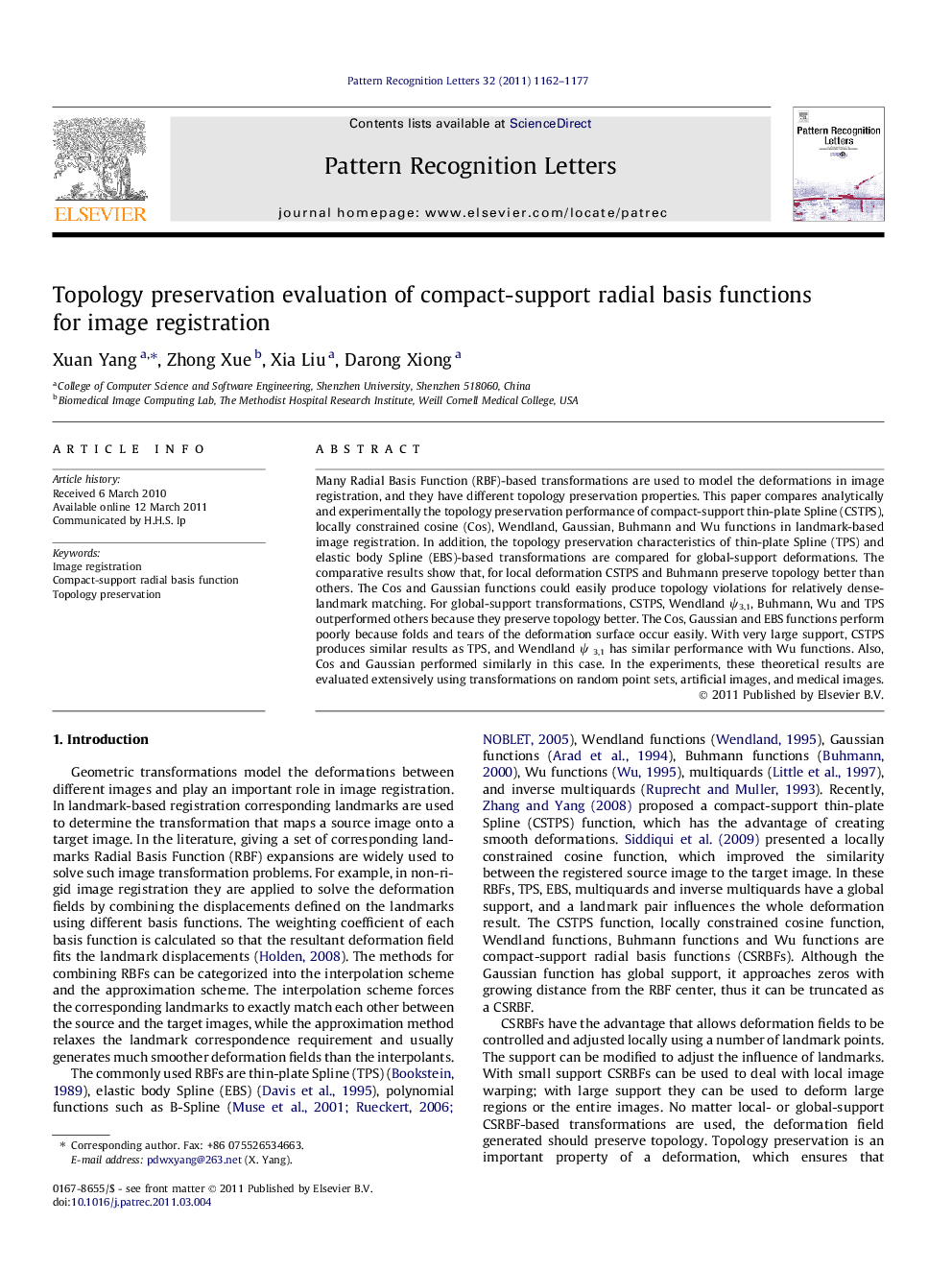| Article ID | Journal | Published Year | Pages | File Type |
|---|---|---|---|---|
| 536014 | Pattern Recognition Letters | 2011 | 16 Pages |
Many Radial Basis Function (RBF)-based transformations are used to model the deformations in image registration, and they have different topology preservation properties. This paper compares analytically and experimentally the topology preservation performance of compact-support thin-plate Spline (CSTPS), locally constrained cosine (Cos), Wendland, Gaussian, Buhmann and Wu functions in landmark-based image registration. In addition, the topology preservation characteristics of thin-plate Spline (TPS) and elastic body Spline (EBS)-based transformations are compared for global-support deformations. The comparative results show that, for local deformation CSTPS and Buhmann preserve topology better than others. The Cos and Gaussian functions could easily produce topology violations for relatively dense-landmark matching. For global-support transformations, CSTPS, Wendland ψ3,1, Buhmann, Wu and TPS outperformed others because they preserve topology better. The Cos, Gaussian and EBS functions perform poorly because folds and tears of the deformation surface occur easily. With very large support, CSTPS produces similar results as TPS, and Wendland ψ3,1 has similar performance with Wu functions. Also, Cos and Gaussian performed similarly in this case. In the experiments, these theoretical results are evaluated extensively using transformations on random point sets, artificial images, and medical images.
► Compares the topology preservation performance of six CSRBFs. ► For local deformation CSTPS and Buhmann preserve topology better than others. ► Cos and Gaussian produce topology violations easily for dense-landmark matching. ► With large support, CSTPS, Wendland ψ3,1, Buhmann and Wu outperform Cos and Gaussian.
